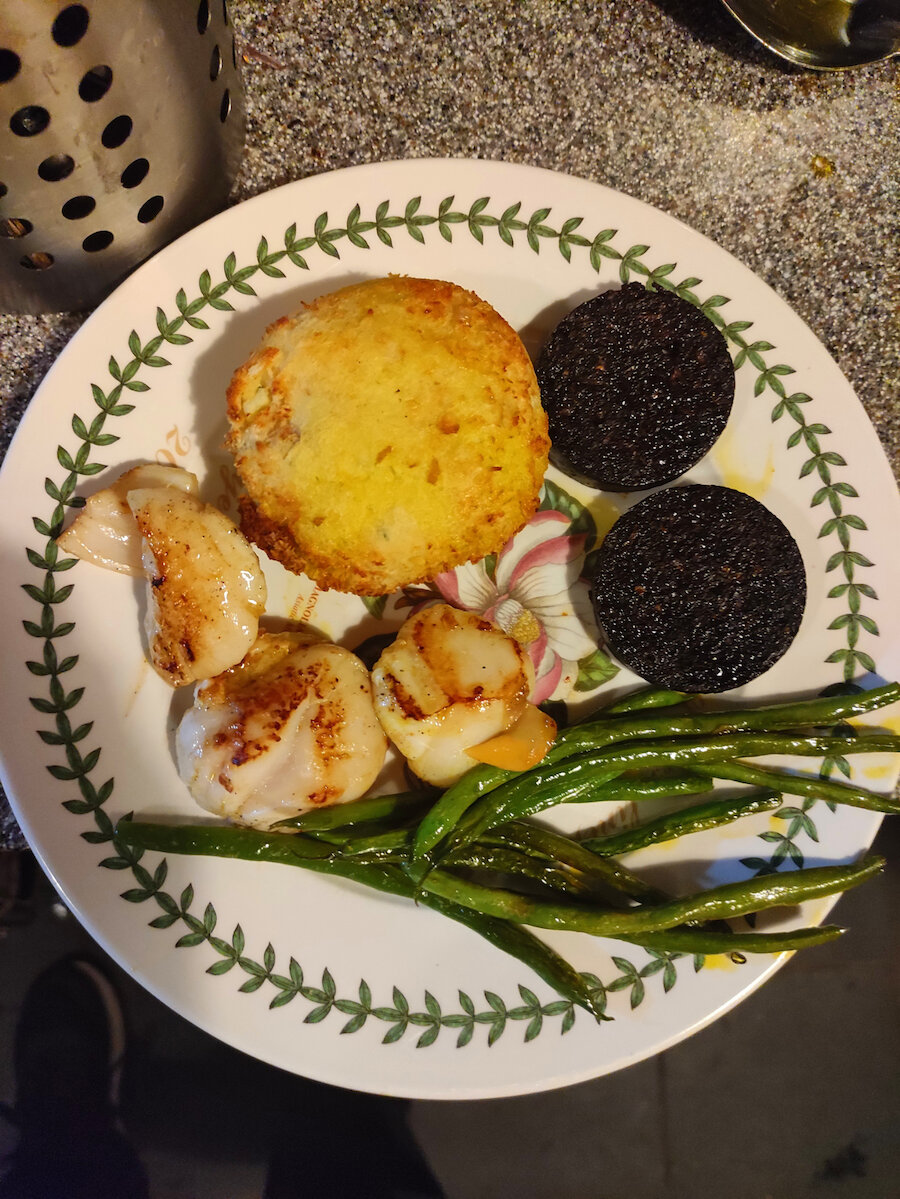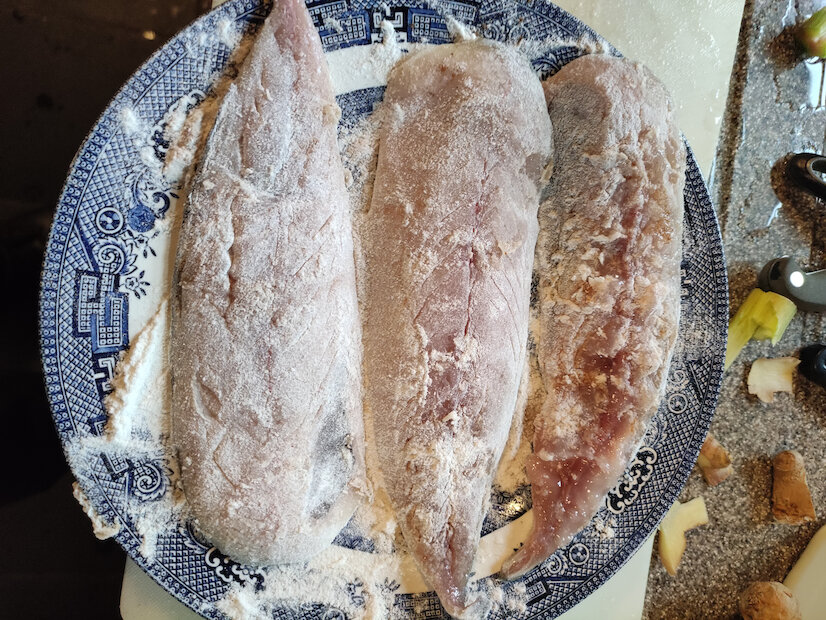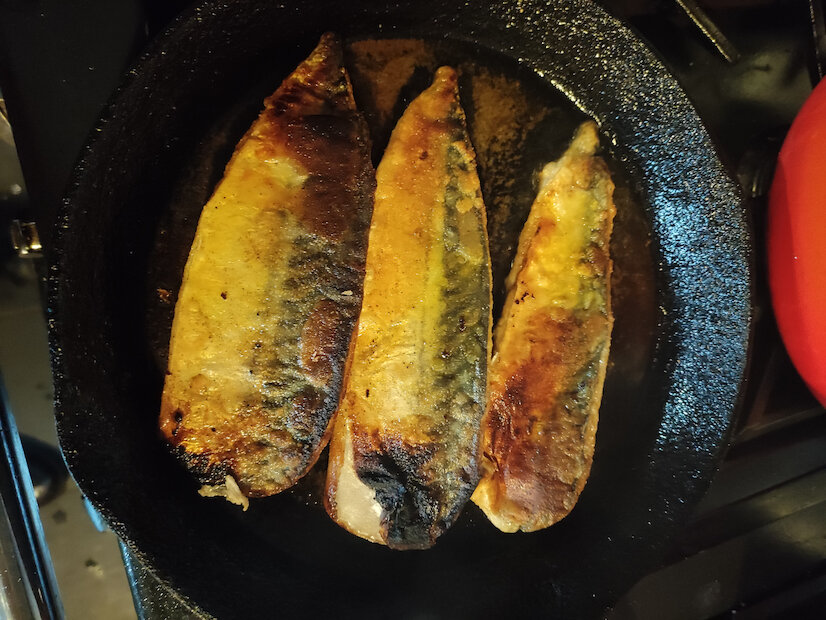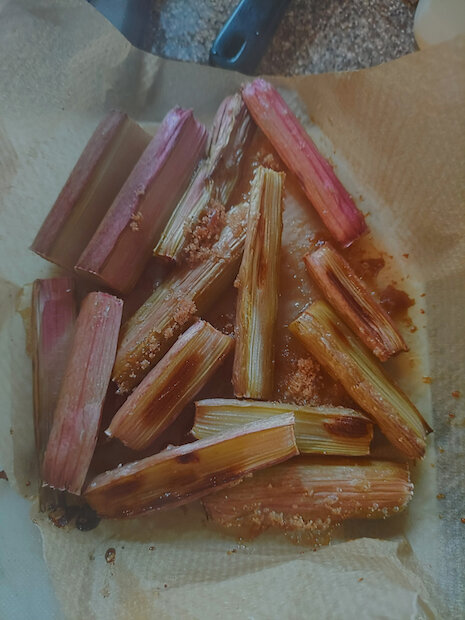Shetland’s scallop fishery is sustainable, Marine Stewardship Council approved and regarded with some puzzlement by eco-warriors who consider dredging the seabed a very bad thing. But a combination of careful management, licensing and control of access has meant you can eat Shetland scallops until the orcas come home with a clear conscience. Or if you fancy diving for them yourself, wrap up warm.
I’m all in favour of fuss-free, fast food when possible ( sometimes it’s essential) and in Shetland, making that happen while maintaining taste and quality is straightforward, if you know where to shop. I wanted some carbs with my scallops but quick, easy and with a matching and fairly epic smoked fishiness.
From long exposure to their delights, I knew that Island Deli’s fish cakes, made with smoked haddock and local tatties, would do the job. Available widely but in my case from the Brae Garage. Add some French beans and Stornoway black pudding from the Hillswick Community Shop (solidarity with Europe and other Scottish islands, though any of the local butchers’ varieties would have been fine) a bit of garlic and you have a simple, sustaining, sustainable and really very upmarket meal.
We’re not quite at the end of the inshore mackerel season (though you can get them all winter) but Blydoit had fresh-in fillets, and I couldn’t resist them.
We freeze a lot of garden rhubarb for the winter but there was one solitary stalk left lurking in the shelter of a compost bin, and roasted, rhubarb provides the best accompaniment to this meaty, oily fish, a sort of mini-tuna. I coated it in seasoned flour and fried it in butter. Straightforward tatties with (more) butter and ginger fried in said butter. I like butter. And some would say it’s better for you than any of those so-called ‘healthy’ spreads. I certainly hope so.
Please check out Mary Prior’s wonderful book Rhubarbaria for more on this astonishing plant. She had very strong Shetland connections.



